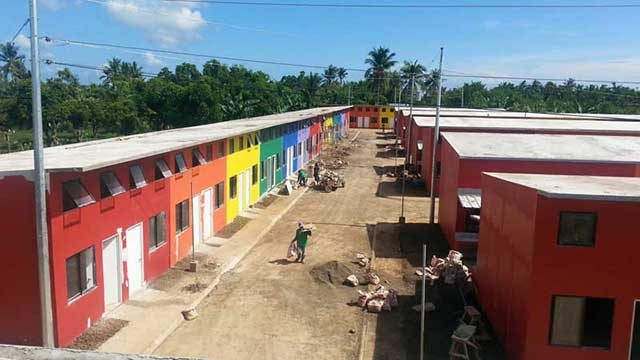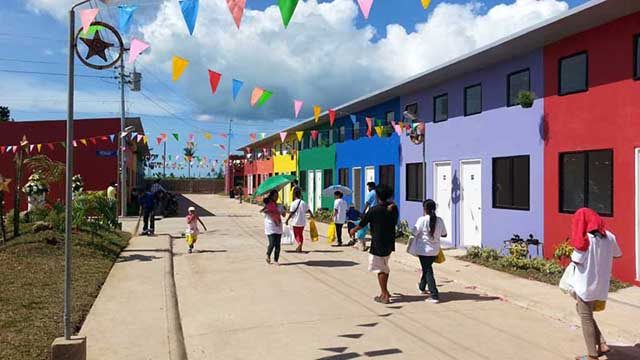SUMMARY
This is AI generated summarization, which may have errors. For context, always refer to the full article.

MANILA, Philippines – “Resilience” has been one of the more sterling characteristics attributed to the Filipino people. Perennial exposure to natural calamities has become a way of life for a nation generally described as warm and gregarious. But when Typhoon Yolanda hit the Visayas region last November 2013, it became a daunting task to simply roll with the punches left by what has been recorded as the strongest typhoon to ever hit landfall in recent history.
Images of the aftermath are a cold reminder of the biggest casualty of the tragedy. It comes as no surprise that farmers and fisherfolk – regarded as one of the most marginalized sectors of the country’s population – carried the brunt of the typhoon’s rage. Living mostly in coastal areas, they have no access to standard or sturdy housing to begin with. After the storm had passed, these people were still left at a loss on how to rebuild and move forward.
Shelter, along with the likes of food and clothing, is a fundamental survival requirement. Without proper housing, a tenant is exposed to the elements and is not only at risk of losing his possessions, but also his livelihood, loved ones, and all hope.
The aftermath
Ma. Lou Mendoyos is no stranger to difficulty. She stopped schooling when she was in fourth grade, suffered from poverty at a young age, and got pregnant at 17. But her personal hardships did not exempt her from the fury of Yolanda. The super typhoon swept away her house and all her belongings, and in the aftermath, snuffed the life of her 6-month old infant.
A year after the typhoon, Mendoyos resided in a makeshift wooden animal cage in the midst of a no-build zone with her two young children and live-in partner, Arvie Cirsostomo, a tricycle driver. It is a scenario that conjures the words of Gandhi: poverty really is the worst form of violence.
Seeing as the victims of the typhoon are still struggling to recover, SM Cares, the corporate social responsibility arm of SM Prime labored for a solution. What they came up with is the SM Cares Housing Project.
SM Cares
The SM Cares Housing Project aims to build 1,000 homes in the affected areas of Visayas for the displaced victims of Yolanda. Their first Housing Village is in Bogo, Cebu. Villages are equipped with all the utilities and basic amenities to make sure that it is not only livable, but also comfortable and especially resilient. It has streetlights, a community center, and even a basketball court.
Alongside community and livelihood development programs that are offered to the tenants, these villages are undoubtedly made to last.
Ma. Lou Mendoyos is one of the first of the lucky beneficiaries who will be given a home through the SM Cares Housing Project.
The beneficiaries
Many of the beneficiaries are those who were most devastated by the typhoon, so after living on the outskirts of no-build zones and high-risk areas, beneficiaries are happy to call their village home. Many did not believe there was much hope left for them after the typhoon hit.
Marivic Castigador confides, “We thank SM Cares for giving us this donation for our houses. In our fear when the typhoon happened we did not expect this kind of assistance would come to us.”
Conclusion
The poor are the most vulnerable to any calamity. Because they cannot afford sturdy and secure housing, they suffer the most when disaster strikes.
With the combined effort of SM and the P200M worth of donations made by committed business partners, tenants, private individuals and the community, there are now 200 houses in Bogo, Cebu for the displaced victims of Yolanda. The next areas in queue are Concepcion, Ilioilo and Ormoc, and Tacloban, in Leyte. Each village will have 200 houses each, except for Tacloban which will have 400.
This project is on top of the P100 million that SM has dedicated to rehabilitate the fallen villages and cities.
In his recently concluded trip to the Philippines, Pope Francis also made it a point to visit Tacloban, Leyte. And in his speech, he gives special mention not just to the victims of the calamity, but also to those who labored to clear the rubble. It is in true Christian faith to give and to sacrifice, especially when others are so deeply in need.
Solidarity, not just in the face of calamity, but in all circumstances, is what allows us to move forward and face new challenges.

So even though Filipinos are a resilient people, they still need a solid anchor where they can hitch their hopes. Now, with the all-out efforts of SM Cares and its proponents, there is hope for those who have lost the most. Beneficiaries now have something to look forward to, and for that they are forever grateful. Joel Piañar narrates:
“We are very grateful that SM Cares reached our place. And with your coming, with your compassion and the help you gave us, Yolanda survivors, we would like to express our thanks. We wholeheartedly accept your help. Thank you very, very much. Since we got this chance from SM Cares, we will really take care of this as long as we live. The way you took care of us is the way we will take care of the housing that you have built for us. Thank you very, very much…from the bottom of our hearts. Thank you so much.” – Rappler.com
Add a comment
How does this make you feel?
There are no comments yet. Add your comment to start the conversation.